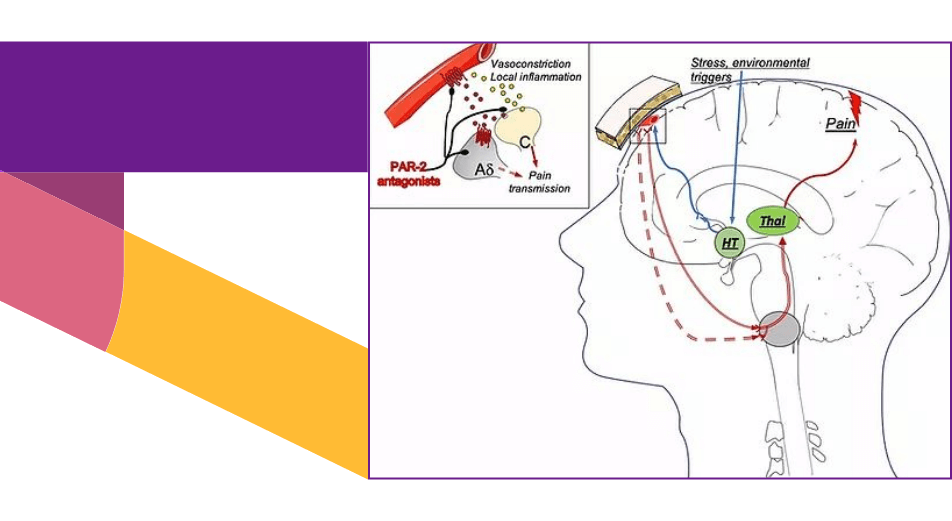How do Migraines happen?
Migraines can be triggered by many environmental factors, such as hormonal fluctuations, sensory stimuli, food additives, exertion or sleep deprivation, resulting in an imbalance of signals from the hypothalamus. This leads to activation of pain sensing neurons, called nociceptors that innervate the head and face and release of neurotransmitters, that mediate a series of events that we typically associate with inflammation, even though there is no infection present. Blood vessels dilate; fluid seeps into the surrounding tissue; white blood cells are recruited to the area and inflammatory molecules are released. These factors work together to activate the pain sensing neurons, that then transmit the signal to the brainstem.Glutamate is released from the central terminals, activating a second set of neurons that transmit the signal to the thalamus, and ultimately to higher brain centers, resulting in the perception of pain.




